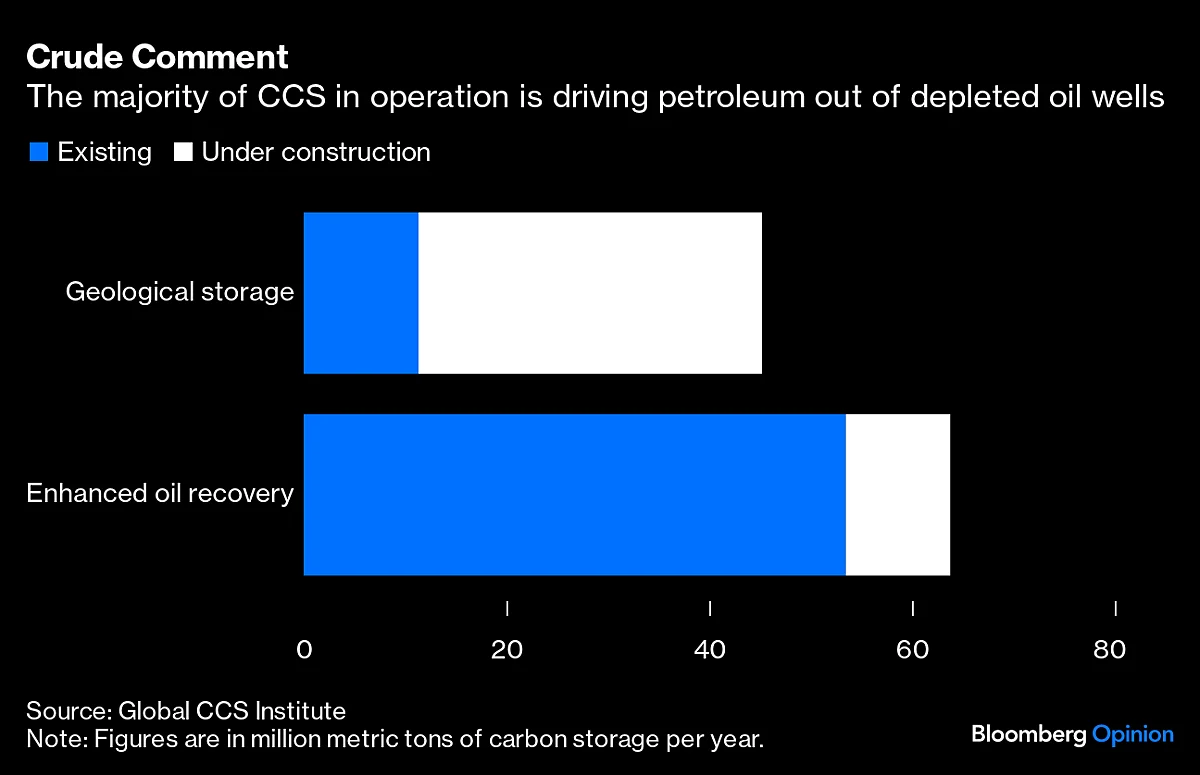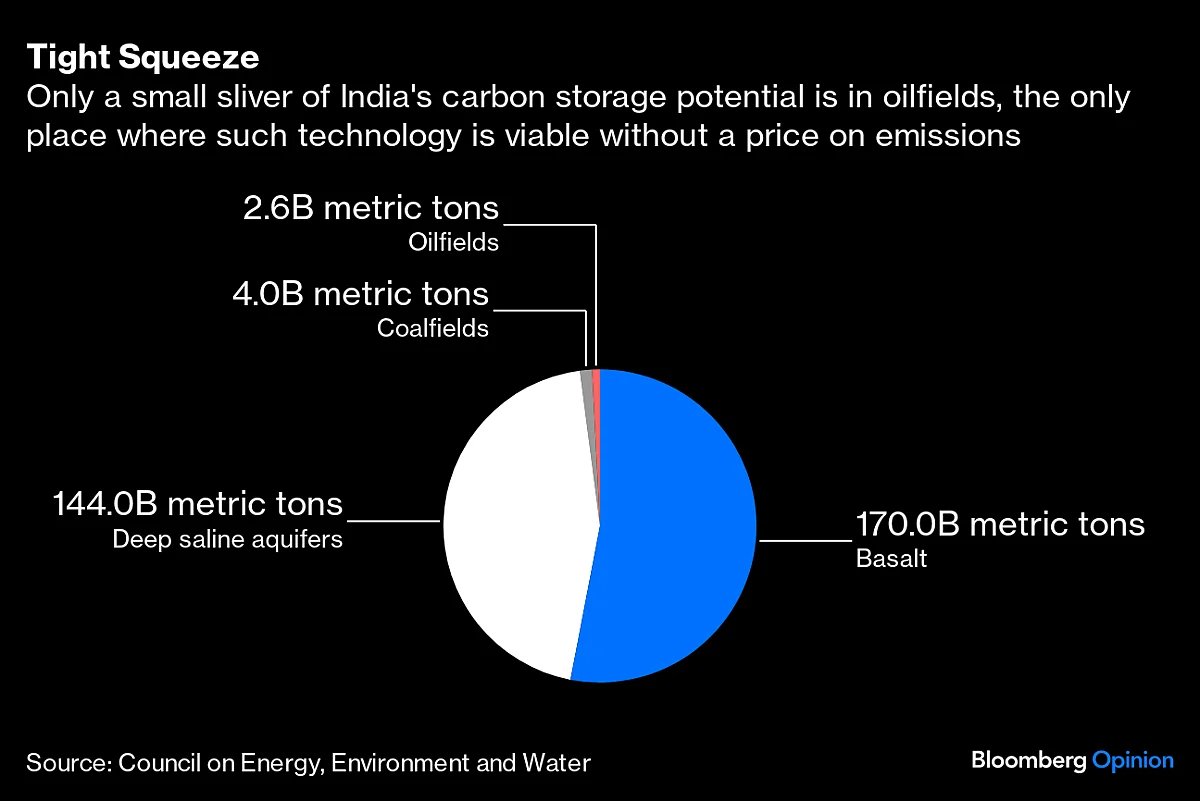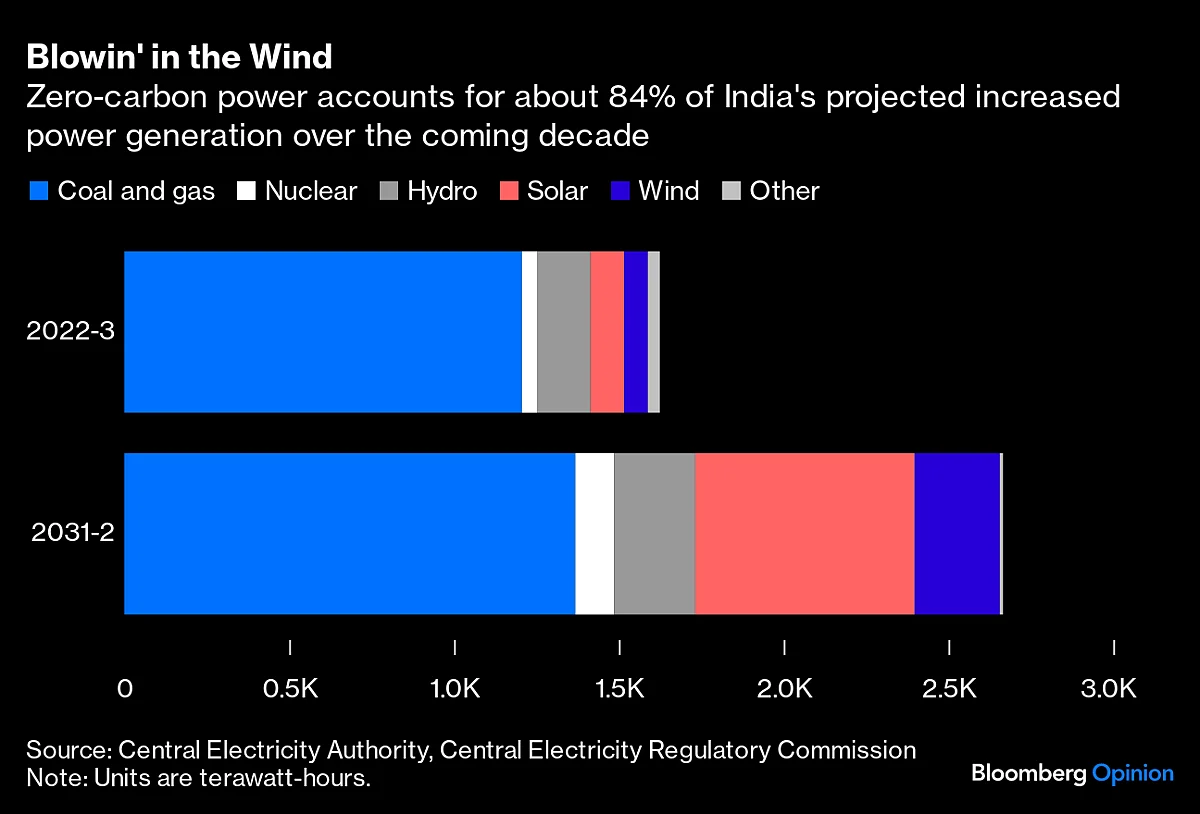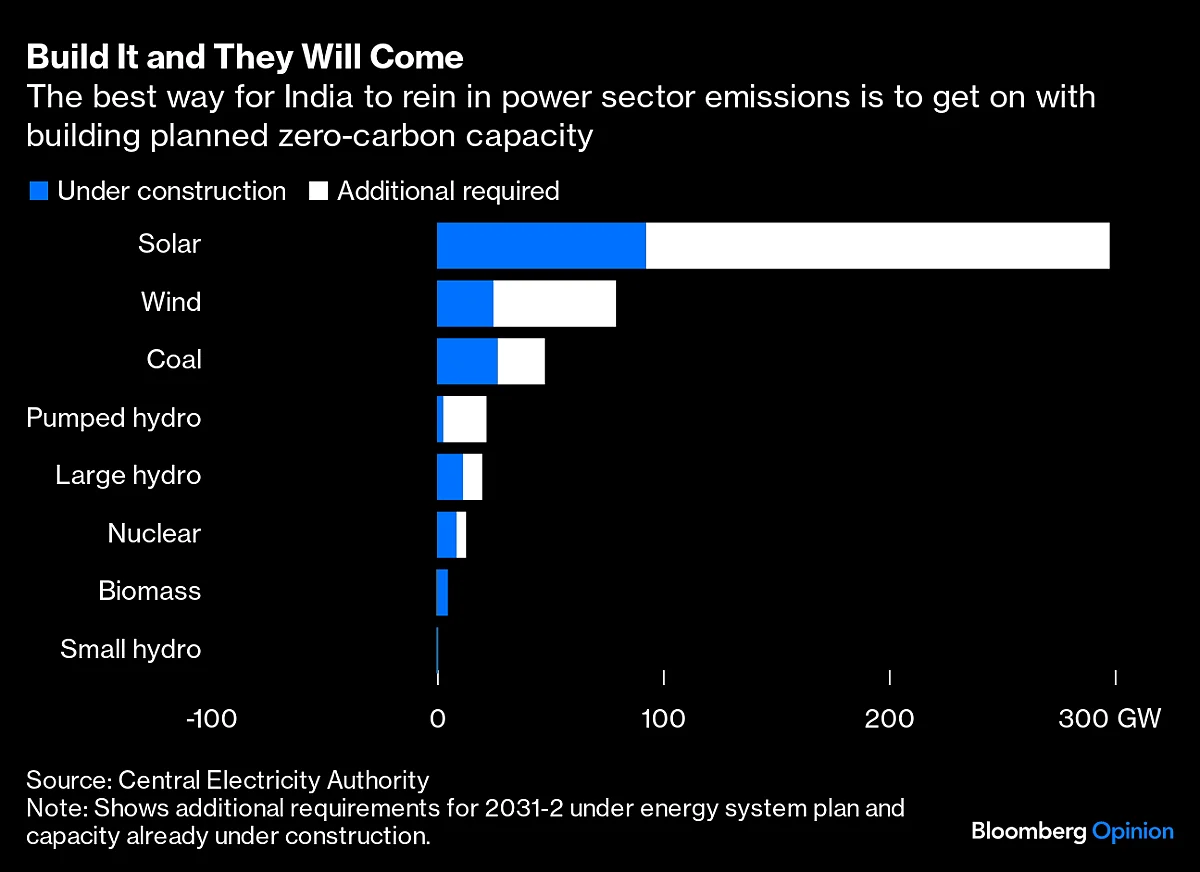India Is Scorning The Energy Bounty That Transformed China
Touting carbon capture and storage is wishful thinking at best, and dangerous shortsightedness at worst. Just look at China.

(Bloomberg Opinion) -- You know an electricity policy is bankrupt when its advocates start touting the virtues of carbon capture and storage.
Decades of promoting the technology, also known as CCS — which aims to filter the carbon dioxide from smokestacks and inject the pollution deep underground — have failed to produce more than a handful of operating plants. So plans by India’s government think tank Niti Aayog to capture as much of 70% of the country’s power-sector emissions should be treated as wishful thinking at best, and dangerous shortsightedness at worst. “We have abundant coal and we want to use it, in a sustainable way,” the body’s energy adviser Rajnath Ram told Bloomberg News.
That sounds a lot like the language China used about its energy planning 15 years ago — but the technological revolution since then has opened up new, cheaper and cleaner options. India would do well to follow that path.

If CCS is to work anywhere, two challenging conditions need to be met. First, there must be ample underground reservoirs to store the waste gas that’s produced. Secondly, the cost of fossil power plus that of CCS itself must be lower than any alternative technology. India fails on both counts.
Take the reservoirs first. More than 80% of the carbon dioxide being pumped underground at a commercial scale globally is being used in oilfields. Forcing gas into petroleum deposits is a long-established technology to draw extra crude to the surface, which produces a revenue stream to help pay the substantial expense of capture and storage (as well as causing an extra bump of emissions).
However, India is desperately short of domestic oilfields. Just 2.6 billion metric tons of its estimated 359 billion tons of carbon storage capacity is in petroleum reservoirs — enough to store just one year of the country’s emissions.

That brings us back to the second challenging condition for CCS: cost. The most viable slice of that 359 billion-ton capacity comes from injecting carbon into briny water deposits deep underground. That technology only works in the presence of a credible and rigorously enforced carbon price. There’s no suggestion that India is promising anything of the sort.
The winners in this race are technologies that Beijing has been pushing hard for nearly a generation. Wind and solar are already cheaper than new coal generation in India, and even adding a four-hour battery to ensure power is available after sunset leaves them less expensive than coal with carbon capture, according to BloombergNEF.

Hydroelectricity is another under-exploited resource. India, like China, benefits from its proximity to the fast-flowing waters of the Himalayas, the richest resource of river power on the planet. While China has been so busy developing this resource that dam-building is now approaching its geological limits, India has neglected the sector. More than 17 gigawatts of projects have been abandoned due to bureaucratic tangles and local opposition. The country is at only about 29% of its capacity for hydropower, with a further 10% under construction. Lifting that ratio would provide terawatt-hours of electricity to India’s cities as well as controlling the floodwaters that periodically devastate rural areas.
It’s a similar situation with atomic power, where the government has plans to roughly triple generating capacity by 2031. It’s unlikely to achieve more than about two-thirds of that target, having connected just two reactors in the past decade, compared to 35 in China.

The problem Niti Aayog is trying to solve is genuine. India’s energy consumption is climbing at an astonishing pace, with peak levels rising from 130 gigawatts in 2014 (roughly the level of Spain’s generation capacity) to 230 GW last year and as much as 400 GW in 2030 — equivalent to running all the power plants in Japan and Taiwan combined.
The solution, however, is to be realistic about India’s advantages as well as its disadvantages. The country is blessed with abundant power from solar and wind, whose potential is already recognized in New Delhi’s long-term policies.

Under its latest 10-year plan released last month, the National Electricity Authority expects annual fossil-fired generation over the coming decade to grow by about 162 terawatt-hours, roughly the same increase as has been seen over the past two years alone. That would put power sector emissions well within reach of the peak and subsequent decline the planet, and India’s sweltering population, desperately needs.
Getting there, however, depends on hitting targets for zero-carbon power that the country has repeatedly missed. If renewable connections fall short, coal is going to make up the difference, either with — or more likely without — CCS. Rather than depending on an unrealistic and unproven new technology to lock away pollution, India must give zero-carbon developers the certainty and policy backing to stop all that soot from getting burned in the first place. The best way to decarbonize the coal sector isn’t to bury its emissions — it’s to bury the industry as a whole.
More From Bloomberg Opinion:
-
China’s Clean Technology Is Made of Dirty Metals: David Fickling
-
The Four Fortunes Riding on a Modi Win in 2024: Andy Mukherjee
-
The Rest of Asia Can Benefit From the EU-China Chill: Karishma Vaswani
(Corrects reference to the date of nuclear reactor connections in the 10th paragraph.)
This column does not necessarily reflect the opinion of the editorial board or Bloomberg LP and its owners.
David Fickling is a Bloomberg Opinion columnist covering energy and commodities. Previously, he worked for Bloomberg News, the Wall Street Journal and the Financial Times.
More stories like this are available on bloomberg.com/opinion
©2024 Bloomberg L.P.